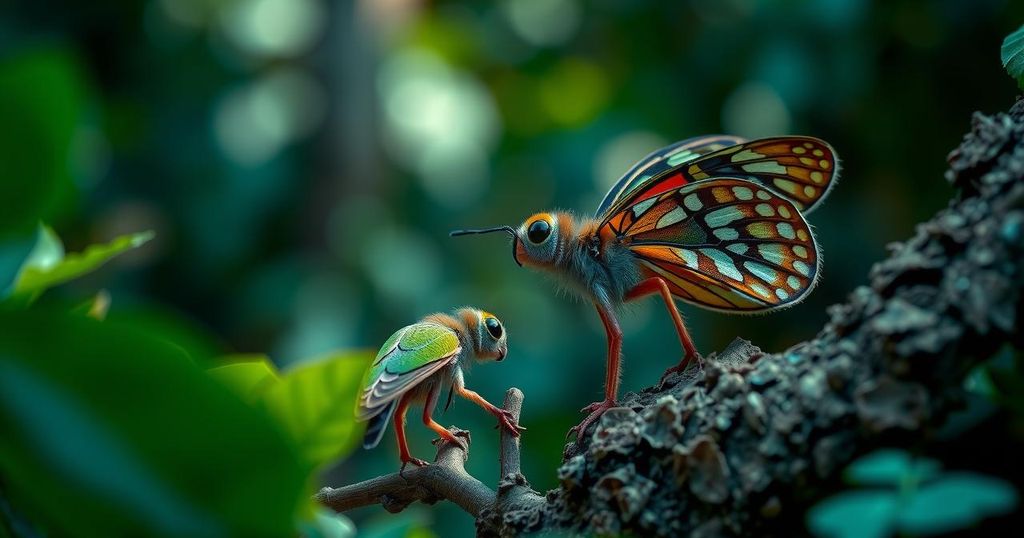COP16: Understanding Biodiversity and Global Conservation Efforts

COP16 is convening in Cali, Colombia, where global leaders are assessing progress in biodiversity protection. Following a commitment made at COP15 to reverse biodiversity loss by 2030, the summit will address escalating threats to ecosystems caused by human activities. With alarming extinction rates, leaders are called to account for their conservation pledges, emphasizing international collaboration and sustainable practices. COP16 highlights the interconnectedness of human survival and biodiversity.
The 16th meeting of the Conference of the Parties to the Convention on Biological Diversity (COP16) is currently underway in Cali, Colombia, where global leaders are convening to assess the progress made in safeguarding the natural world. The summit follows a significant 2022 agreement in which nearly 200 nations committed to reversing biodiversity loss by the decade’s end. As concerns mount over the alarming decline in plant and animal populations and the degradation of vital habitats, COP16 serves as a crucial platform for holding nations accountable to their conservation pledges. Biodiversity encompasses the rich variety of life on Earth, including animals, plants, fungi, and microorganisms. This diversity is essential for human survival, providing crucial resources such as clean water, air, food, and medical supplies. Ecosystems thrive on interdependence, with diverse species collaborating to sustain overall environmental health. Plants, in particular, play a vital role in mitigating climate change and improving air quality. Trees in urban areas are adept at absorbing carbon dioxide, contributing substantially to cleaner air. At present, species extinction rates are alarmingly high, with estimates suggesting that humanity is precipitating the sixth mass extinction. The International Union for Conservation of Nature (IUCN) maintains a ‘red list’ indicating that over 163,000 species have been evaluated, of which approximately 28% are categorized as threatened. Furthermore, the UN’s Intergovernmental Science-Policy Platform on Biodiversity and Ecosystem Services (IPBES) reports that at least one million species are at risk, largely attributable to human actions. Key threats to biodiversity include habitat destruction through logging, overfishing, and other exploitative practices. Between 2001 and 2021, the world lost an astonishing 437 million hectares of tree cover, culminating in detrimental effects on global biodiversity. Regions such as Latin America are witnessing a staggering 95% decline in animal populations due to these ongoing threats. At COP15 in December 2022, nations reached a historic consensus to protect 30% of Earth’s land and marine areas by 2030, a commitment referred to as the Kunming-Montreal Global Biodiversity Framework. This framework outlines four principal objectives: enhancing ecosystem conservation, promoting sustainable resource use, ensuring equitable sharing of natural resources, and increasing financial support for biodiversity initiatives. Although this framework is non-binding, signatories are urged to demonstrate tangible progress toward these biodiversity targets. From October 21 to November 1, delegates at COP16 will scrutinize national commitments to nature protection, amid concerns of potential non-compliance. Key discussions will encompass the ambition of national targets, financial support for biodiversity initiatives in developing economies, and equitable sharing of genetic resources. Colombian Environment Minister Susana Muhamad has articulated the summit’s theme—’Peace with Nature’—emphasizing the need for a transformative approach to humanity’s relationship with the natural environment.
The topic of biodiversity is critical today due to the rapid decline of various species and the degradation of their habitats—a situation exacerbated by human activities. Biodiversity constitutes the intricate web of life that sustains natural ecosystems and human welfare alike. Recent international efforts, particularly COP15 in 2022, aimed to establish a robust framework for global biodiversity protection, underscoring the urgency of uniting nations to address these challenges effectively. COP16 seeks to maintain momentum from previous agreements and address accountability concerning nations’ conservation commitments.
In conclusion, COP16 represents a pivotal moment in the global effort to protect biodiversity amidst escalating threats. The summit emphasizes the importance of international cooperation in addressing biodiversity loss and fosters accountability among countries regarding their conservation pledges. With escalating extinction rates and the catastrophic impacts of climate change, humanity must prioritize and effectively implement measures aimed at preserving the diverse tapestry of life on Earth. The ongoing dialogue at COP16 serves as a crucial opportunity for leaders to reaffirm their dedication to the preservation of nature and the sustainability of vital ecosystems.
Original Source: www.bbc.com






